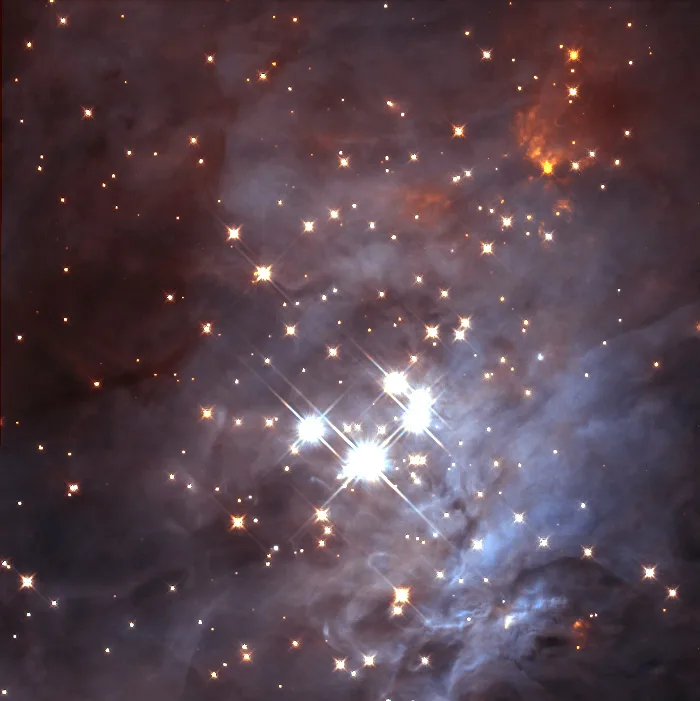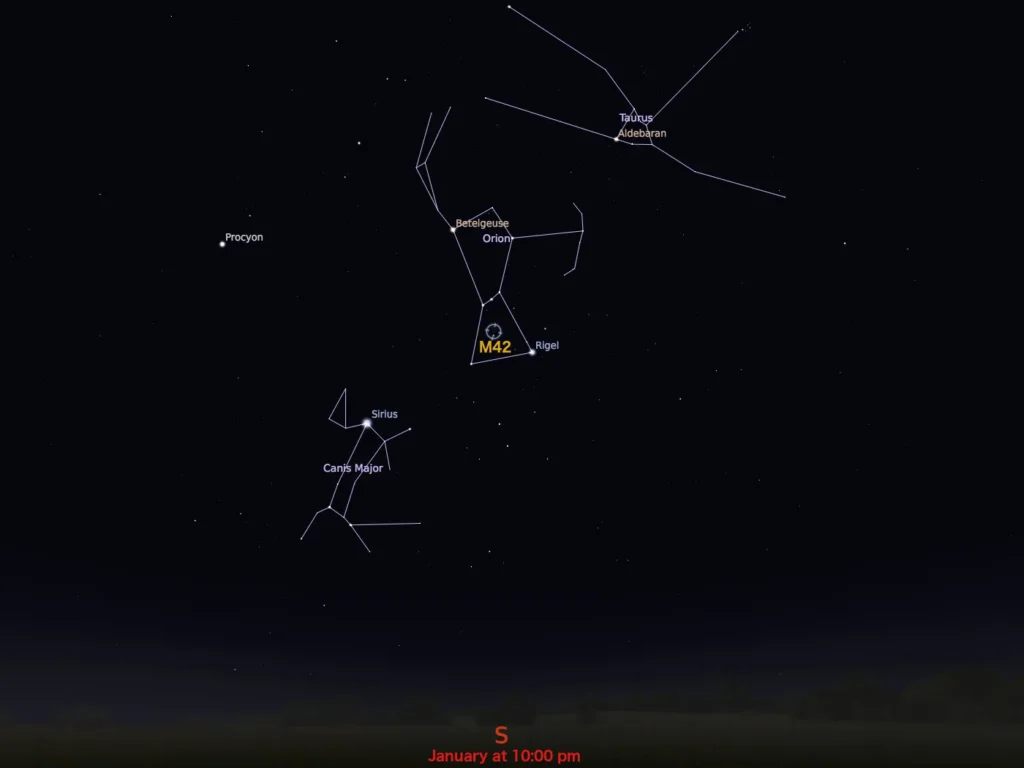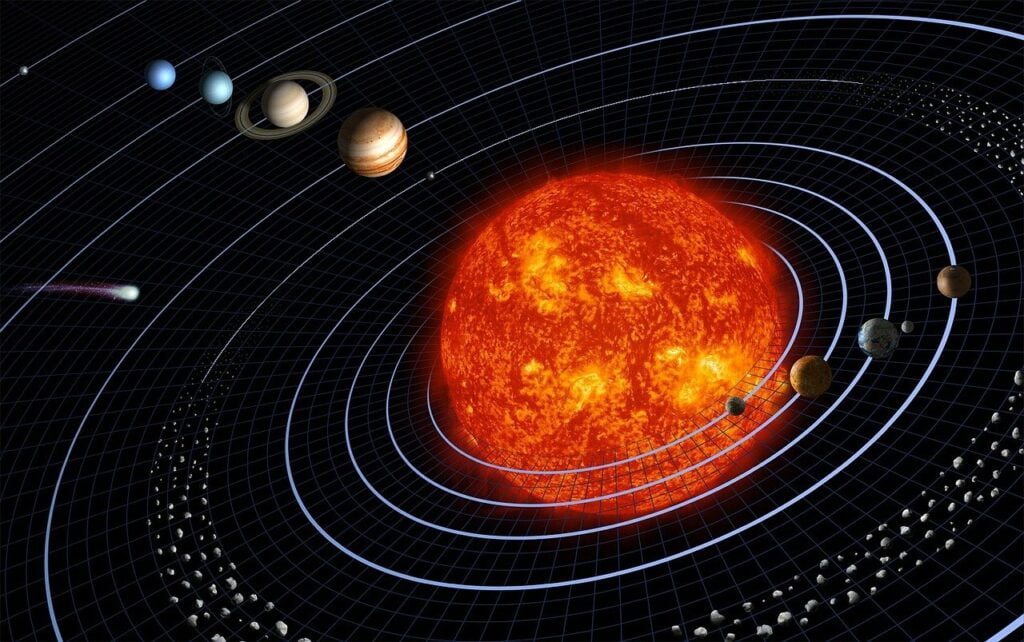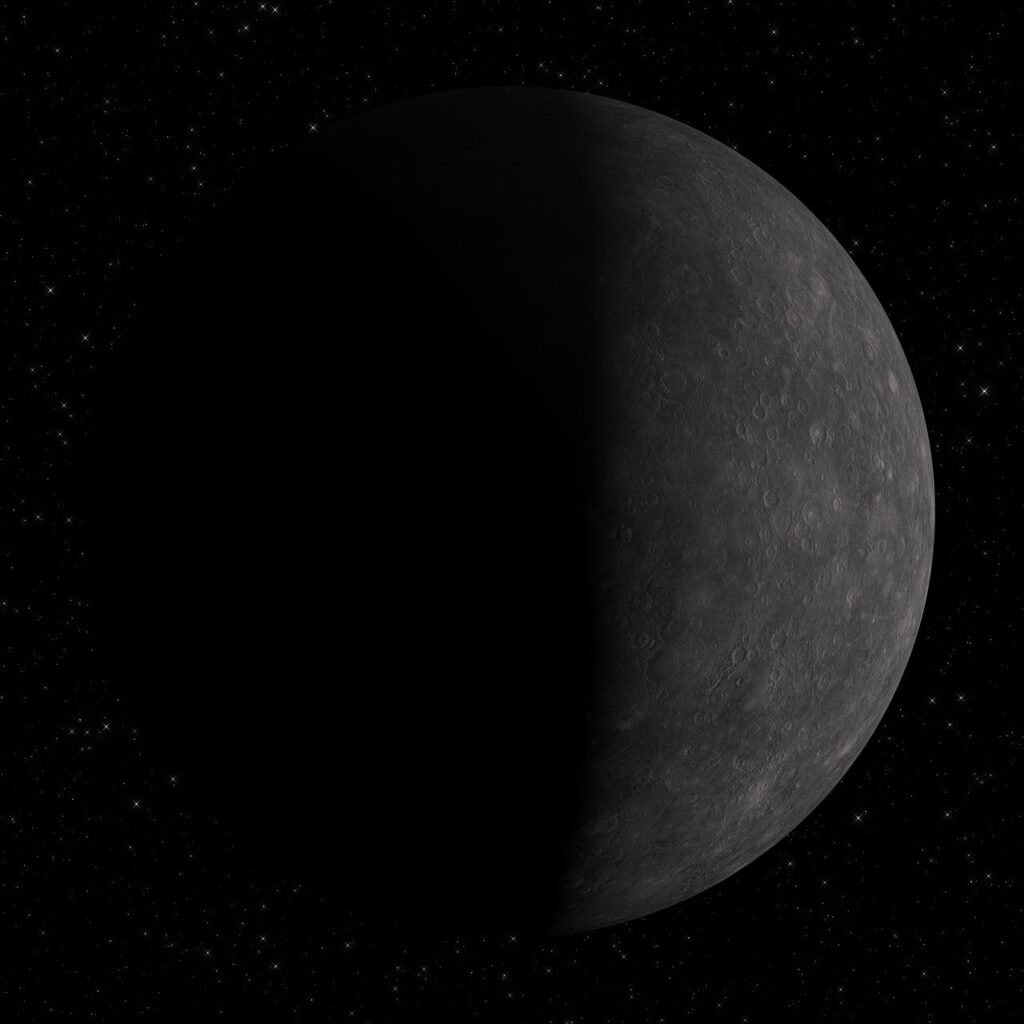
Introduction and Overview of the The Orion Nebula
The Orion Nebula, also known as M42, is a breathtaking celestial marvel that has captivated astronomers and laypeople alike for centuries. This vast interstellar cloud, located about 1,344 light-years from Earth, serves as a bustling nursery for newborn stars, providing a glimpse into the intricate processes of stellar birth and evolution.
Visible to the naked eye as a hazy cloud in the constellation of Orion, the nebula’s distinctive appearance as the middle “star” in Orion’s “sword” has made it a familiar landmark in the night sky. Its remarkable luminosity, estimated to be about 4,000 times that of our Sun, makes it one of the brightest nebulae in the sky, easily observable with amateur telescopes.
The Orion Nebula’s celestial history can be traced back to Galileo Galilei, who first observed it in 1610 using his rudimentary telescope. Subsequent observations by astronomers like Christiaan Huygens and William Herschel further revealed the nebula’s intricate structure and its role in star formation.
Physical Characteristics of The Orion Nebula
The Orion Nebula’s physical dimensions are truly impressive. With an estimated diameter of approximately 24 light-years, it is one of the largest star-forming regions in our immediate cosmic neighborhood. This vast cloud of interstellar gas and dust is composed primarily of hydrogen gas, the primary fuel source for star formation. Helium, dust grains, and trace amounts of other elements also contribute to the nebula’s composition.
The nebula’s luminosity is immense, emitting about 4,000 times more light than our Sun. This intense radiation, particularly ultraviolet light from young, hot stars, is a catalyst for star formation, stimulating the collapse of dense gas clouds into protostars.
Star Formation Processes
The Orion Nebula is a dynamic laboratory for observing the intricate processes of star formation. Gravity plays a pivotal role in this cosmic ballet, as it pulls together clouds of gas and dust, gradually compressing them and increasing their temperature.
As the gas and dust continue to contract, they heat up, reaching temperatures where nuclear fusion can ignite, marking the birth of a star. This early stage of stellar evolution, known as the protostar phase, is characterized by intense gravitational contraction, which generates immense heat and radiation.
The Orion Nebula is home to a young open star cluster known as the Trapezium, consisting of four massive stars located at the nebula’s core. These stars, born from the nebula’s dense gas clouds, are still in their early stages of evolution, emitting powerful ultraviolet radiation that ionizes the surrounding gas and dust.
The ionization of the nebula’s material creates a vibrant glow, visible across a wide spectrum of electromagnetic radiation, from visible light to infrared and radio waves. This radiant nebula is a testament to the ceaseless cycle of stellar birth and evolution, providing astronomers with invaluable insights into the formation of stars and the intricate interplay between gravity, radiation, and matter in the cosmos.

K.L. Luhman (Harvard-Smithsonian Center for Astrophysics, Cambridge, Mass.); and G. Schneider, E. Young, G. Rieke, A. Cotera, H. Chen, M. Rieke, R. Thompson (Steward Observatory, University of Arizona, Tucson, Ariz.) and NASA/ESA
Electromagnetic Radiation
The Orion Nebula radiates across a wide spectrum of electromagnetic energy, providing astronomers with a wealth of information about its structure, composition, and star formation processes. Visible light, the light we can perceive with our eyes, reveals the nebula’s intricate gas and dust clouds, showcasing its glowing, wispy appearance.
Infrared radiation penetrates the nebula’s obscuring dust, allowing astronomers to peer into its interior and study the formation of protostars, the early stages of stellar evolution. Ultraviolet radiation, emitted by hot young stars, ionizes the nebula’s gas, creating a vibrant glow that can be observed in both visible and ultraviolet light. Radio waves, with their long wavelengths, penetrate the nebula’s gas and dust, providing insights into the nebula’s magnetic fields and the distribution of ionized gas.
The Hubble Space Telescope, with its unparalleled resolution and sensitivity, has captured stunning images of the Orion Nebula, revealing intricate details of its structure and processes. These images have been instrumental in confirming the presence of protoplanetary disks, the precursors to planetary systems, around young stars in the nebula.
Scientific Significance
The Orion Nebula stands as a crucial laboratory for understanding the intricate processes of star formation. Its proximity to Earth and its abundance of young stars make it an ideal target for observational studies.
Studies of the Orion Nebula have significantly enhanced our understanding of protostar formation, providing insights into the physical conditions and evolutionary pathways that lead to the birth of stars. Observations of the nebula have also revealed the role of stellar winds, outflows of gas and dust from young stars, in shaping the nebula’s structure and regulating the formation of new stars.
The nebula’s ability to form protoplanetary disks, the birthplaces of planetary systems, has made it a valuable target for exoplanet research. Studies of these disks have provided crucial information about the formation and evolution of planetary systems, including the conditions that lead to the formation of different types of planets and the processes that shape their orbits and compositions.
The research conducted on the Orion Nebula has far-reaching implications, contributing to our understanding of astrophysical phenomena such as stellar evolution, planetary formation, and the distribution of matter in the cosmos. The nebula’s research has also had applications in fields such as cosmology, helping us to understand the formation and evolution of galaxies and the large-scale structure of the universe.
Observations and Discoveries
The Orion Nebula has been a subject of astronomical study for centuries, with observations dating back to Galileo Galilei’s initial observations in 1610. Early telescopic observations revealed the nebula’s distinctive appearance and its location within the constellation of Orion.
With the advent of more powerful telescopes and sophisticated instrumentation, astronomers began to gather more detailed information about the nebula’s structure, composition, and star formation processes. In the 19th century, William Herschel identified the Trapezium, a young open star cluster located at the nebula’s core.
The advent of space telescopes, particularly the Hubble Space Telescope, has revolutionized our understanding of the Orion Nebula. Hubble’s high-resolution images have revealed previously unseen details of the nebula’s gas and dust clouds, protostars, and stellar clusters.
Recent observations have led to significant discoveries, including the detection of protoplanetary disks around young stars, the presence of magnetic fields within the nebula, and the formation of new stars within the Trapezium cluster. These discoveries have furthered our understanding of the nebula’s star formation processes and the dynamics of young stellar systems.
Ongoing research programs continue to explore the Orion Nebula, using a variety of observational techniques to probe its intricate structure and processes. These ongoing investigations are expected to yield even more groundbreaking discoveries, deepening our understanding of stellar evolution, planetary formation, and the origin of life in our universe.

Image courtesy of Stellarium
Public Interest and Popular Culture
The Orion Nebula’s mesmerizing appearance and profound cosmic significance have captivated the imagination of amateur astronomers and the public alike for centuries. Its distinctive glow, visible to the naked eye in the constellation of Orion, has made it a familiar landmark in the night sky.
The nebula’s popularity is reflected in its frequent depiction in various forms of art, literature, and popular culture. Artists have captured its ethereal beauty in paintings, sketches, and photographs, while writers have used it as a backdrop for stories and poems. The nebula has even made appearances in popular films and television shows, further cementing its place in the collective consciousness.
The Orion Nebula’s public appeal extends beyond its aesthetic beauty. It serves as a tangible reminder of the vastness, complexity, and wonder of the cosmos, inspiring awe and curiosity in people of all ages. Its study has also fostered a sense of connection between humanity and the universe, reminding us that we are part of something much larger and more awe-inspiring than ourselves.
The public outreach and education efforts of astronomers and organizations like the Orion Telescope Nebula Association have played a significant role in promoting appreciation for the Orion Nebula and other celestial wonders. These efforts have helped to bridge the gap between scientists and the public, fostering a shared appreciation for the wonders of the universe and inspiring the next generation of scientists and explorers.
Conclusion
The Orion Nebula stands as a remarkable cosmic laboratory, providing invaluable insights into the intricate processes of star formation. Its proximity to Earth, its abundance of young stars, and its rich history of astronomical study have made it an unparalleled resource for our understanding of the universe.
The nebula’s scientific significance is matched only by its widespread recognition and popularity among amateur astronomers and the general public. Its captivating appearance and cosmic significance have inspired artists, writers, and filmmakers, further deepening its impact on human culture.
As we continue to explore the Orion Nebula, we are bound to make even more groundbreaking discoveries, deepening our understanding of stellar evolution, planetary formation, and the origin of life in our universe. The nebula’s enduring fascination and the anticipation for future discoveries serve as a testament to its profound cosmic significance and its enduring place in our collective imagination.
You may also like
Mercury: The Closest Planet to the Sun
Venus: The Earth’s Twin or a Very Different Planet?
Mars: Comprehensive Exploration, unveiling the Mysteries
Jupiter: A Cosmic Giant – Symphony of Storms
Saturn: A Gaseous Giant with Enthralling Rings and Diverse Moons
Useful links
NASA:
Hubble Space Telescope – Orion Nebula: https://science.nasa.gov/missions/hubble/hubble-views-a-stellar-duo-in-orion-nebula/
Messier 42 (The Orion Nebula): https://www.nasa.gov/?search=Orion+Nebula
Webb’s wide-angle view of the Orion Nebula is released in ESASky: https://www.nasa.gov/?search=Orion+Nebula
ESA (European Space Agency):
Embracing Orion: https://www.esa.int/Science_Exploration/Space_Science/Hubble_panoramic_view_of_Orion_Nebula
Hubble panoramic view of Orion Nebula: https://www.esa.int/Science_Exploration/Space_Science/Hubble_panoramic_view_of_Orion_Nebula
Webb’s wide-angle view of the Orion Nebula is released in ESASky: https://www.esa.int/Science_Exploration/Space_Science/Webb/Webb_s_wide-angle_view_of_the_Orion_Nebula_is_released_in_ESASky
Photos from: https://science.nasa.gov/mission/hubble/science/explore-the-night-sky/hubble-messier-catalog/messier-42/


